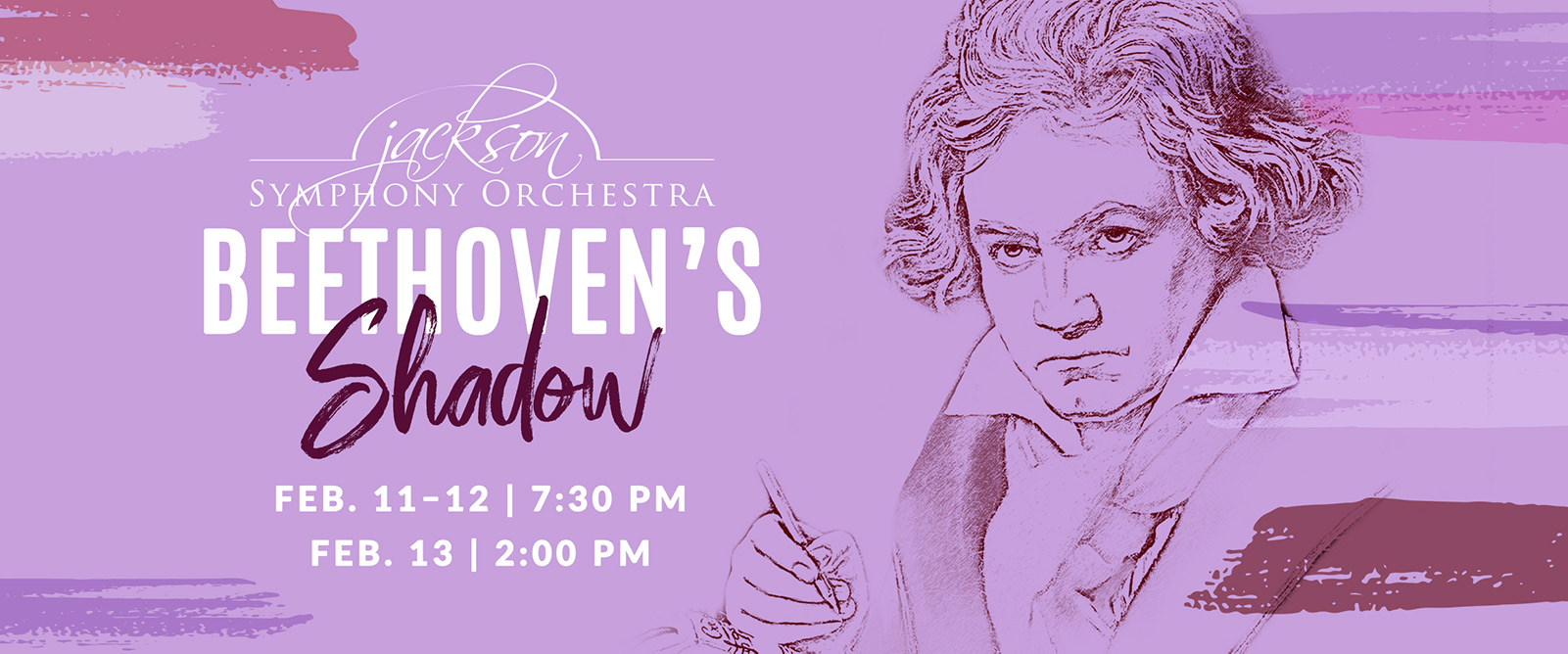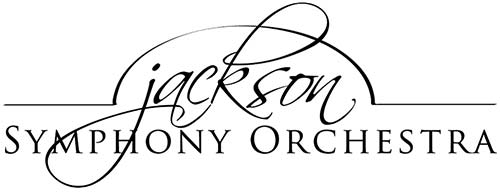
BEETHOVEN’S SHADOW PROGRAM NOTES
By Composer in Residence Bruce Brown
Maestro Matthew Aubin has chosen the title “Beethoven’s Shadow” for the third concert in the JSO’s 2021/22 season, Rejoice: Reuniting Through the Joy of Music. He could easily have used that designation for the whole year. It is no exaggeration to say that the powerful music of Ludwig van Beethoven (1770-1827) exerted tremendous influence, directly or indirectly, on virtually all the composers who followed him. Brahms spent about 20 years writing his first symphony, which we heard on the first concert, and said: “You can’t have any idea what it’s like always to hear such a giant marching behind you.”
Hector Berlioz, whose Symphonie fantastique graced the second concert, used timpani to depict distant thunder in an homage to Beethoven’s Pastorale symphony. In March, we will hear the overture to The Boatswain’s Mate, an opera that pays tribute to Beethoven by quoting his fifth symphony in a later section. Robert Schumann said that in Chopin’s concertos, like the one we will hear in April, Chopin “introduces the spirit of Beethoven into the concert hall.”
Tonight’s program will feature a brand-new composition that draws inspiration directly from Beethoven, as well as two of Beethoven’s own works that followed a crucial turning point in his life and career. A duo of the JSO’s favorite guest performers, cellist Julian Schwarz and pianist Marika Bournaki, will return to our stage, along with violinist Arnaud Sussmann, to perform one of those pieces, Beethoven’s unique triple concerto for violin, cello and piano.
Underpinnings for Orchestra
Composer Larry Alan Smith (b. 1955) has said writing music can be like whittling a piece of wood, and he’s not completely sure what a piece will be like until it is finished. “I start playing with notes and thinking of rhythms and emotions and instruments and so it takes shape slowly,” he said, “I sketch with my pencil and paper and if things go according to plan music gets down on paper.” The New York Times described Smith as “a young composer of great gifts” after his debut in the Big Apple, and he has gone on to develop an international career as a composer, performer, educator and arts executive.
Smith studied with the legendary French teacher Nadia Boulanger and received BM, MM, and DMA degrees at Juilliard, where he received the Joseph Machlis Prize for outstanding distinction in composition. He was appointed to the faculty at Juilliard as his doctorate neared completion, and he taught there from 1980 to 1986. He has also served in faculty and leadership roles at the Boston Conservatory, the North Carolina School of the Arts, the Hartt School at the University of Hartford, and for several prestigious musical organizations in the United States and in Italy. He has conducted orchestras and chamber ensembles in England, Brazil, Italy, Poland, Croatia, Germany and the United States, and he frequently performs his own piano compositions. To top it all off, he is a prolific poet.
Dr. Smith has offered to provide us with snapshots both “before” and “after” the creation of his new work for the Jackson Symphony Orchestra. The following are his “before” comments:
Read more about this piece from the Composer, Larry Alan Smith.
Concerto for Violin, Cello and Piano, in C Major, Op. 56 “Triple”
Both of Beethoven’s works on this program come from the period when the crushing blow of his deafness became impossible to ignore. He started to hear “ringing and buzzing” in his ears as early as 1796, when he was 26 or 27. In 1802, in the village of Heiligenstadt, he wrote a testament to his brothers Carl and Johann that has become famous for its anguished acknowledgement of his infirmity:
In a postscript he wrote: “O Providence – grant me at least but one day of pure joy – it is so long since real joy echoed in my heart…” Shortly after that he wrote the first sketches for his “Eroica” symphony (see below). A bold new style emerged in his music, and he rose up with a new vision of himself and of art as a heroic and individualistic achievement.
In 1804, Beethoven wrote a letter to his publisher telling him that he had written “something new,” a concertante for orchestra with three different solo instruments, violin, cello and piano. As he often did, Beethoven continued to revise and rework the Triple Concerto until it was published in 1807. Pieces with two or more soloists were popular in Vienna then, but it seems this was the first concerto written for this particular combination, a “piano trio.” Beethoven dedicated the concerto to Prince Lobkowitz, who allowed Beethoven to hold trial performances of this concerto, along with his “Eroica” symphony, in his palace with his private orchestra.
The three soloists engage in a lively conversation in the first movement. In the second movement a rich flowing melody is heard mainly in the cello. The elegant third movement is based on the triple-meter style of a polacca, a Polish folk dance also known by the French term “polonaise.”
Symphony #3 in E-flat, the “Eroica”
Beethoven wrote most of his “Eroica” symphony in late 1803 and completed it in early 1804. The “Eroica” is often cited as the end of the Classical era and the beginning of the Romantic period. It has a much wider emotional range than earlier symphonies, and its first movement alone is almost twice as long as most of them. The finale of this symphony also replaces the customary short, breezy romp with an elaborate set of variations and a fugue. Prince Lobkowitz asked Beethoven for six months of exclusive rights to perform the Eroica privately, and he paid a handsome fee for the privilege. Beethoven saw that as an opportunity to refine the piece, and he took advantage of it to make corrections and revisions. The first public performance took place in the Theater an der Wein in Vienna, on April 7, 1805, with Beethoven conducting.
“Eroica” is Italian for “heroic,” and Beethoven intended to dedicate the work to Napoleon Bonaparte. Then, on the 18th of May, 1804, Bonaparte named himself Emperor of France. Ferdinand Ries describes what happened next in his biography of Beethoven:
Music critic J.W.N. Sullivan said of the “Eroica:” “the first movement is an expression of Beethoven’s courage in confronting his deafness, the second, slow and dirgelike, depicting the overwhelming despair he felt, the third, the scherzo, an indomitable uprising of creative energy and the fourth an exuberant outpouring of creative energy.” The powerful music of the second movement, a funeral march, was performed at the funerals of Felix Mendelssohn, Serge Koussevitsky, Franklin Roosevelt and Arturo Toscanini, and it played a prominent role in the memorial service after the “Munich Massacre” at the 1972 Summer Olympics.
PROGRAM SCHEDULE
— INTERMISSION —
| RUNTIME: 2H |
